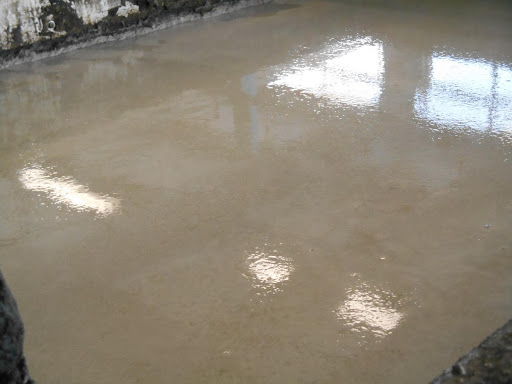Dissolved Air Flotation Systems are designed to separate solids from the wastewater. Microbubbles attach to the particulates and float to the surface of the DAF to form a sludge blanket. We are often asked how thick should we maintain the surface sludge blanket?
There are a number of factors that contribute to the thickness of the sludge blanket in a DAF. These include:
- The Total Suspended Solids (TSS) concentration in the wastestream influent.
- Some solids have a low density and can stay in suspension.
- Other solids can be coarse and with a higher density and will settle.
- Solids greater that are ¼ inch or larger are no longer classified as suspended solids and need to be removed with prescreening prior to flowing to the DAF.
- Wastewater Treatment Chemicals contribute to the sludge in the wastewater. Examples include metal salts such as Sodium Aluminate, Ferric Chloride, Aluminum Sulfate, Aluminum Chlorohydrate and Ferrous Sulfates. The inorganic coagulants can generate hydroxide sludges which will increase the suspended solids and overall sludge volume.
- Coagulant Aids like Bentonite Clay, Lime, and Calcium Chloride will also contribute to the sludge volume.
Surface Solids
DAF Solids Float to the surface to build a sludge blanket. DAFs have a Surface Skimmer to remove the solids by scraping them into a sludge transfer tank. These solids are then pumped to a sludge storage tank and processed through a sludge dewatering device such as a plate and frame filter press or to a for liquid hauling.
The key for managing surface sludge is to minimize the amount of water that is scraped to the sludge transfer tank and to maximize the solids for optimum sludge dewatering. If too much water is transferred with the sludge to the transfer tank then the sludge cake may be too watery or thin. If there are not enough solids in the filter press a filter cake may not form properly.
If the surface sludge blanket becomes too thick then the surface skimmer may actually push the sludge blanket down and not get a good scraping of the sludge into the transfer trough. The surface skimmer should take a “good bite” out of the sludge blanket. The skimmer pushes the sludge up onto the DAF beach and into the sludge transfer trough.
Skimmers are typically operated on a timer. A starting point for most DAFs is “ON” for one minute and “OFF” for five minutes. The skimmer timer can be adjusted to maintain a surface sludge blanket approximately a four-to-eight-inch depth. The generation of a very thick sludge blanket may require an almost continuous operation of the surface skimmer.
If the DAF will be off for eight hours of more (over night or over the weekend), the skimmer should be turned on manual to operate continuously for a fifteen-minute period to reduce the thickness of the sludge blanket. A very thick sludge blanket may fall to the bottom over night or over the weekend.



(Photo Left): Industrial User allowed sludge blanket to build up to a very thick level. Surface Skimmers could not operate. The Wastewater Operator and General Manager had to use 48 inch pipe wrenches to manually operate the surface skimmer. When some of the surface sludge was removed the remaining surface sludge blanket was 24 inches thick.


